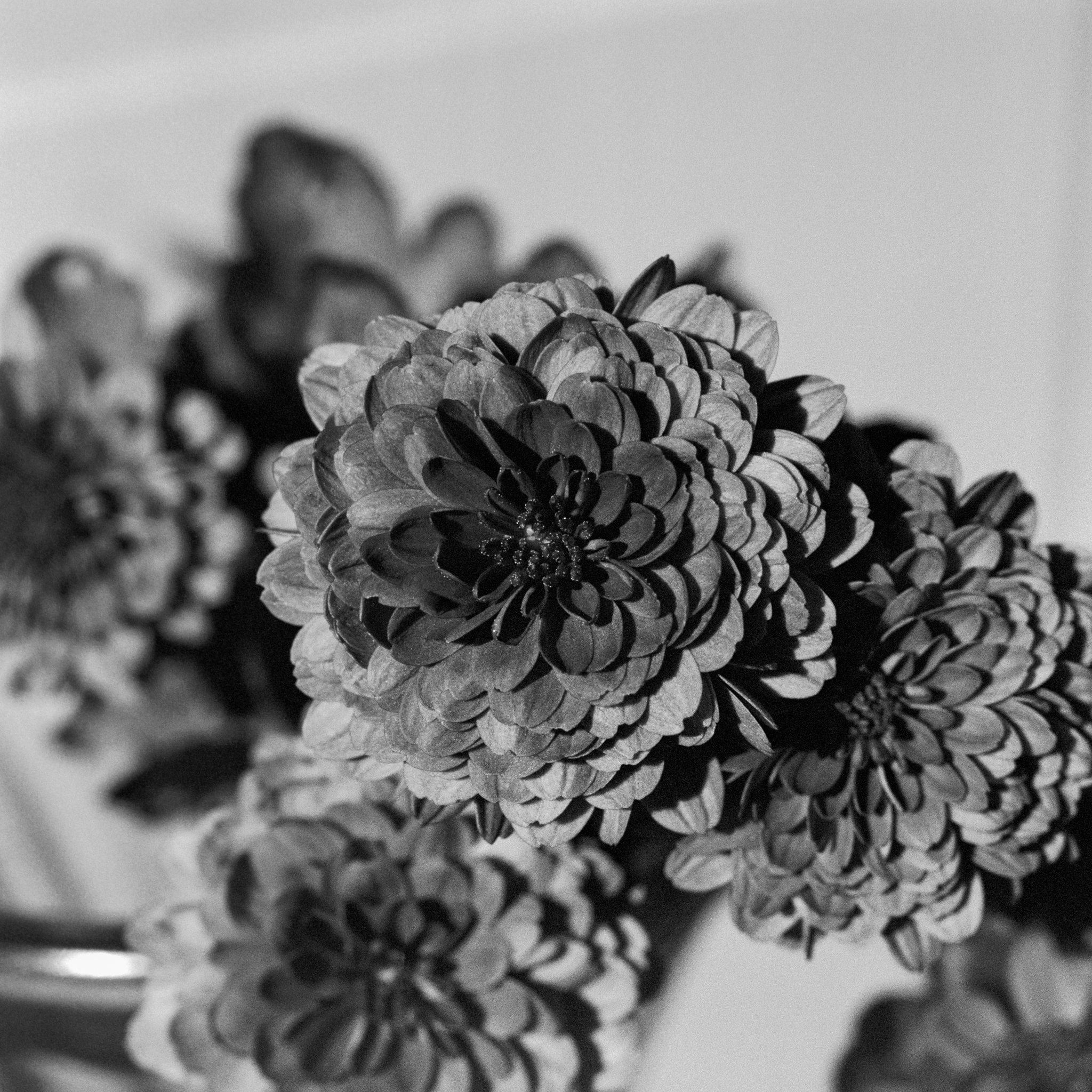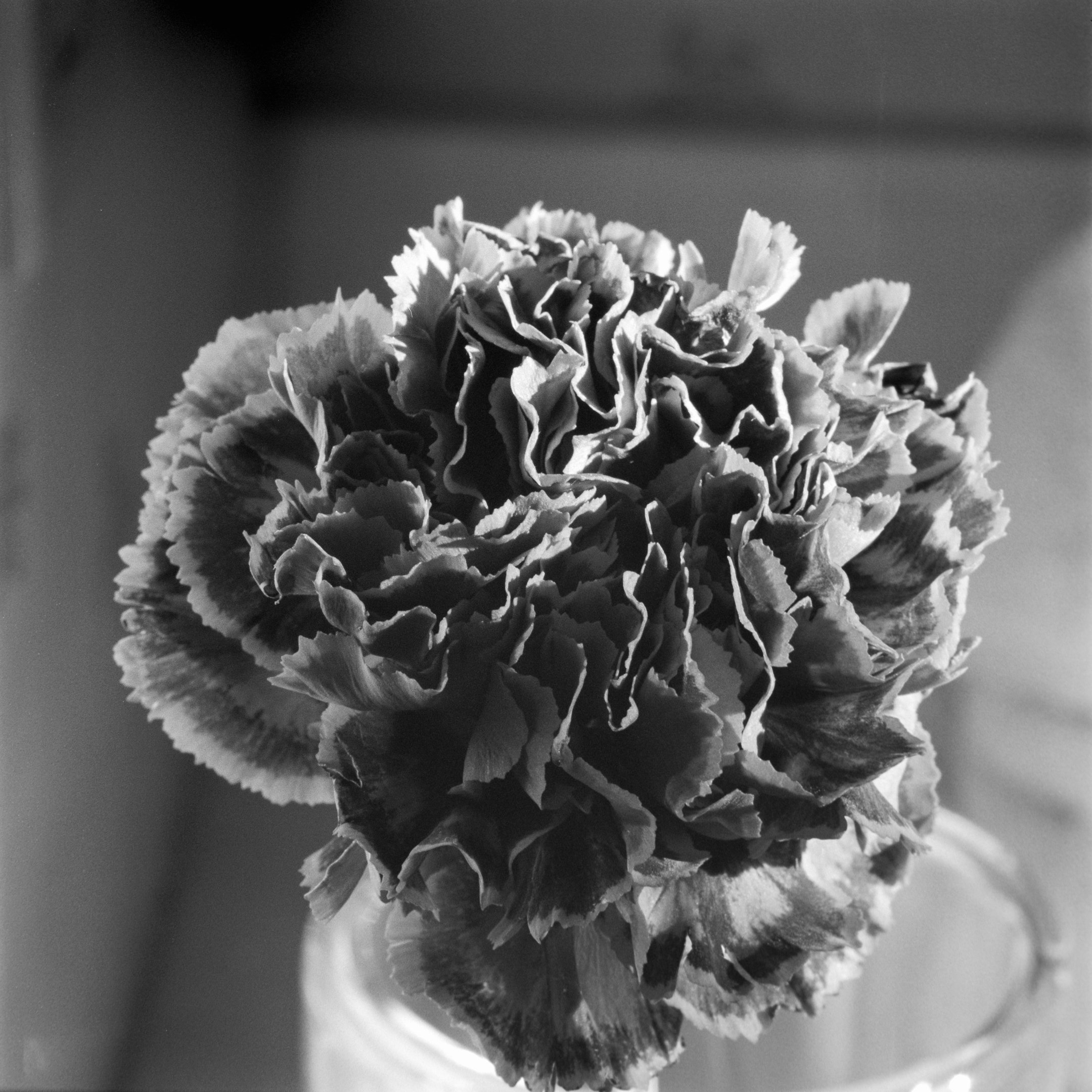Diving into darkroom printing
In September, I was afforded the opportunity to begin crafting prints in the darkroom. Starting with RC paper, I learned the process of making a contact sheet, then selecting a negative to print, then creating a test strip, then creating a second test strip for split-filter printing, then making a mistake and making two more test strips, and then finally making a print. The result is my Mapplethorpe Flora Emulation Series
Mapplethorpe Flora Emulation Series | Images are 10.5” x 10.5” on 11” x 14” Fibre Paper
I first found Robert Mapplethorpe’s work, as many do, because of the controversy surrounding his nude work and the NEA in the late 80’s. Lesser known are his flora photographs. Almost immediately, I appreciated the stark contrast and hidden similarities between his pieces and those of Georgia O’Keeffe. Relating to his pieces, I instantly felt the drive to emulate. Since I have made studies on nude forms before, more interesting to me was his flora.
Tulip, 1984 | Robert Mapplethorpe
Below is the full series along with the accompanying artist statement.
Impressed with Mapplethorpe’s compositional versatility as an artist, I chose to emulate and compound on his famous collection of flora photography. The photographs in this project explore themes of solitude and togetherness; object and shadow; delicacy and rigidity. With a particular emphasis on the containers housing each flower, I aimed to fully explore the potential of a square composition, arranging scenes and observing macro details. Additionally, I also have grown an appreciation for Jess Dugan’s flora work, another queer photographer exploring both portraits and flowers in their work.
Some of the flowers are pictured alongside others; the macro details of the chrysanthemum are contextualized with other flowers peaking from behind. In others, the flower exists alone, devoid of interaction with others of its kind. This isolation and incorporation should resonate with a queer audience; the rotation between loneliness, solitude, and community are seeming tenets of life as a queer person. Special attention is brought to the variety of vases holding the flowers. As with Mapplethorpe, the vase is of comparable compositional significance to the flora. Of varying complexity and designs, each vase was selected to match the shape or texture of the accompanying flora. For example, the Cosmos bipinnatus was chosen for the hourglass shaped vase because of its mirrored growth outward from the central stem. The rose was paired with the donut vase because the shape of the flower seems to fit precisely in the donut hole. While each photographic scene was set up to best suit the composition, all but two photographs, the Cosmos bipinnatus, were photographed using exclusively natural light. To achieve the decorative shadows emblematic of a Mapplethorpe flora, I opted for directional side lighting, allowing the shadows to drape over surfaces next to the subjects rather than behind them. The macro shots provide a view into the complex detail of the flowers, a nicety neglected in the scenes with a vase. I expect viewers to appreciate a sense of serenity in the photographs; while the photos are all still-lives, the light was ephemeral. The window of opportunity for each photograph was narrow and fleeting as the sun progressed on her course. While the flowers remain static, the moving light creates a juxtaposition of ephemerality. What better metaphor for the progression of beauty: the central essence of the subject remains unchanged, but the outward appearance changes drastically. Another juxtaposition present in the work is the delicate textures of the flowers paired with the rigid structure of the vases. This contrast helps to liven the photographs, maintaining a sense of energy within them.
This winter I’m excited to further explore darkroom printing. I plan to practice double exposure techniques to combine and synthesize distant ideas, emulating the works of Jerry Uelsmann. Stay tuned for more.











